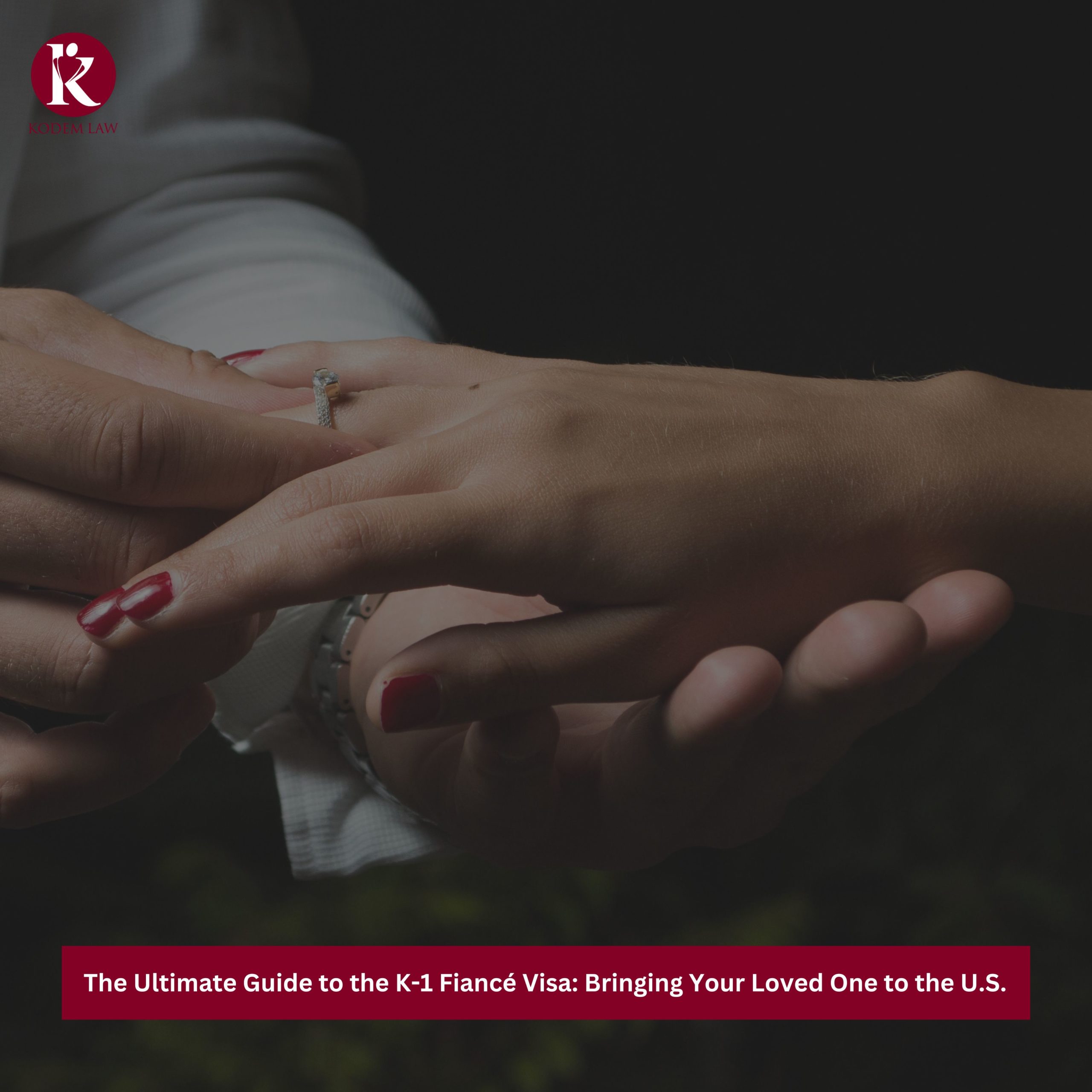
Love knows no borders, but immigration rules do. If you’re a U.S. citizen planning to bring your foreign fiancé to the U.S. to get married, the K-1 Fiancé Visa could be the solution you’ve been looking for. This visa allows your fiancé to enter the United States for 90 days, during which you can legally marry and start your new life together. Let’s dive into everything you need to know about the K-1 Fiancé Visa, from eligibility to the application process, and even tips to overcome common challenges.
What is the K-1 Fiancé Visa?
The K-1 Fiancé Visa is designed for U.S. citizens who want to bring their foreign fiancé to the U.S. for marriage. After the marriage takes place, the fiancé can apply for a green card through the adjustment of status process, paving the way for permanent residency.
Eligibility Requirements for the K-1 Fiancé Visa
To qualify for the K-1 Fiancé Visa, certain conditions must be met:
- The petitioner (U.S. citizen) and their fiancé must have met in person at least once in the past two years.
- Both parties must be legally free to marry.
- The couple must intend to marry within 90 days of the foreign fiancé entering the U.S.
K-1 Fiancé Visa Application Process
Here’s the step-by-step process:
- File Form I-129F: The U.S. citizen must file this form, the Petition for Alien Fiancé, with the USCIS.
- Approval and Transfer: Once approved, the petition is sent to the U.S. embassy or consulate in the fiancé’s home country.
- Consular Processing: The foreign fiancé attends an interview at the embassy, where additional documents and forms are required.
- Visa Issuance: If all goes well, the K-1 visa will be issued, allowing entry into the U.S. for marriage.
Required Documents for the K-1 Visa Application
To ensure a smooth application, you’ll need to gather key documents, such as:
- Proof of U.S. citizenship for the petitioner.
- Evidence of the relationship (photos, communication records, etc.).
- Birth certificates and valid passports.
- Financial documentation to show the petitioner can support the fiancé.
K-1 Visa Processing Time
K-1 visa processing time can vary, but on average, it takes 8-12 months from the initial filing to receiving the K-1 Visa. Factors such as backlogs and incomplete documentation can cause delays, so it’s essential to stay organized and submit everything accurately.
What are the Common Challenges in K-1 Fiancé Visa and How to Overcome Them?
- Visa Denials – Denials can happen if you fail to meet eligibility criteria, provide incomplete documentation, or have a criminal background. Avoid denials by ensuring all paperwork is thorough, accurate, and on time.
- Delays in Processing- Delays are often caused by missing documents or incomplete forms. To avoid setbacks, carefully review all materials before submitting and respond quickly to any additional requests from USCIS or the embassy.
- Preparing for the Visa Interview- The consular interview can be nerve-wracking, but preparation is key. Be ready to answer personal questions about your relationship and provide additional evidence of your bond. Practice answering questions with your fiancé to boost confidence.
What Happens After the K-1 Visa is Granted?
Once the K-1 visa is granted, it permits the fiancé to enter the United States. Upon arrival, the couple must marry within 90 days to comply with the visa conditions. This timeframe is crucial, as failing to marry within 90 days can result in the fiancé having to leave the country.
After the marriage, the foreign spouse becomes eligible to apply for a green card through the adjustment of status process. This involves filing the necessary paperwork, including Form I-485, which paves the way for permanent residency in the U.S. By successfully navigating this process, the foreign spouse can secure their status and build a life together with their U.S. citizen partner.
What are the Alternatives to the K-1 Fiancé Visa?
If the K-1 Visa doesn’t suit your situation, consider alternatives like the CR-1 Spouse Visa, which is available for couples who marry outside of the U.S. before applying.
What are the Alternatives to the K-1 Fiancé Visa?
If the K-1 Visa doesn’t meet your needs, consider these alternatives:
- CR-1 Visa (Conditional Resident Visa): The CR-1 visa is issued to individuals who have been married to a U.S. citizen for less than two years. This visa allows entry into the U.S. with a green card on a conditional basis. Within two years of entry, the beneficiary and their U.S. citizen spouse must file to remove the conditions from the green card. Once approved, the beneficiary will receive a permanent resident card valid for 10 years.
- IR-1 Visa (Immediate Relative Visa): The IR-1 visa is available for individuals who have been married to a U.S. citizen for more than two years at the time their green card is approved. Unlike the CR-1 visa, the IR-1 holder does not need to remove any conditions, as there are none. They will receive a permanent resident card valid for 10 years, with no conditions attached.
- K-3 Spouse Visa: The K-3 visa is a non-immigrant option for foreign spouses of U.S. citizens who have a pending immigrant petition (Form I-130). This visa allows them to enter the U.S. while awaiting the completion of the green card process.
Note: Each of these options has specific eligibility requirements and processes. It’s recommended to consult with an immigration attorney to identify the best path for your situation.
Frequently Asked Question
Q: Can the K-1 visa be extended beyond 90 days?
A: No, the marriage must occur within 90 days. If it doesn’t, the fiancé will need to leave the U.S.
Q: What happens if the fiancé is denied entry at the border?
A: In rare cases, entry may be denied if the fiancé is deemed inadmissible for reasons like criminal history or health concerns.
Q: Can my children come with me on the K-1 Visa?
A: Yes, eligible children under the age of 21 can accompany the fiancé on a K-2 visa. Unmarried children under 21 have the option to travel with the parent to the United States or apply for a visa later. If they choose to apply later, the child’s visa application must be submitted within one year of the issuance date of the parent’s fiancé(e) visa.
Ready to Begin Your Journey?
At Kodem Law, we’re here to simplify the immigration process and help bring you closer to your future spouse. Contact us today to get expert assistance and navigate the K-1 Visa with ease.

